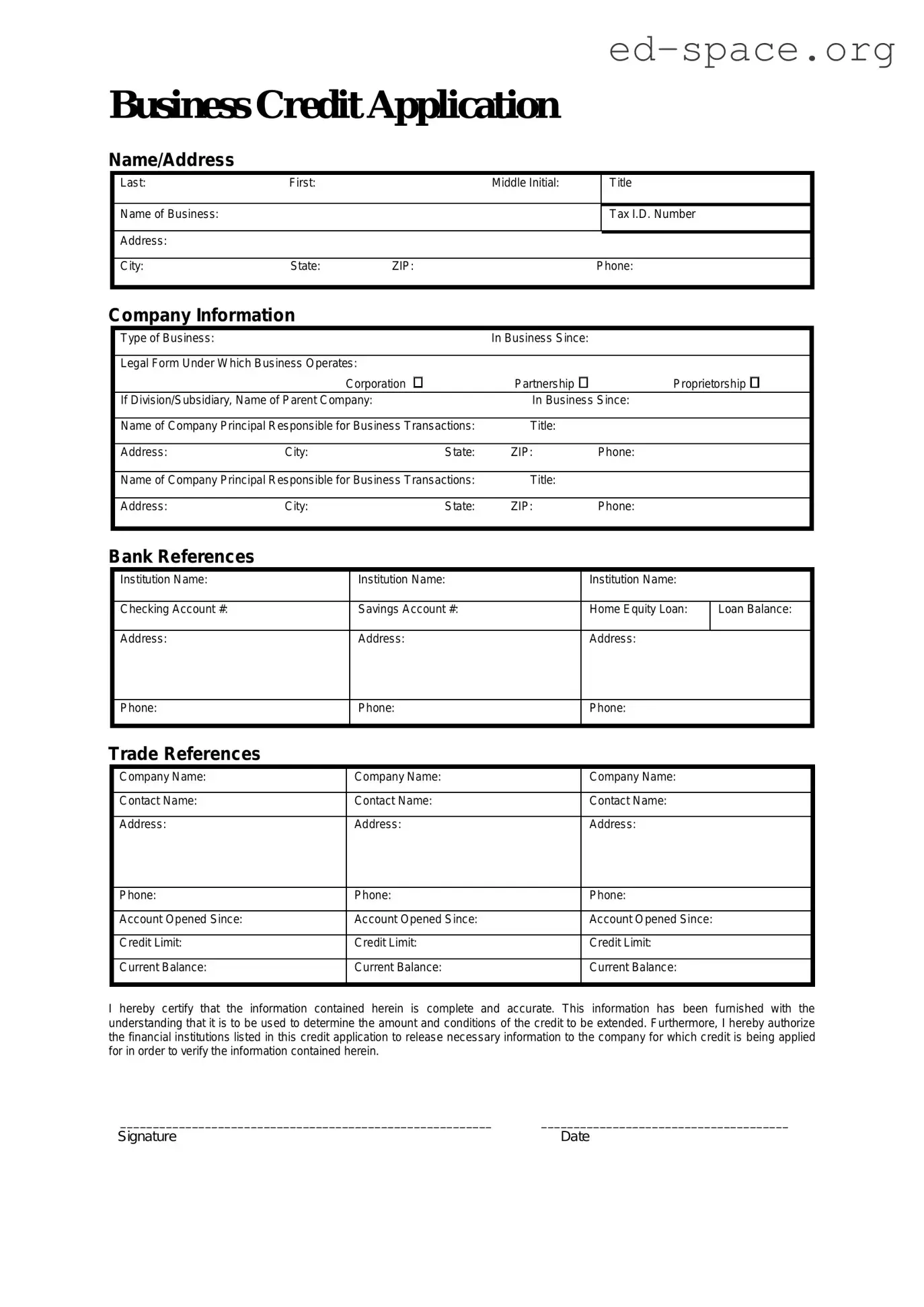What is a Business Credit Application form?
A Business Credit Application form is a document used by companies to apply for credit from vendors or lenders. This form collects information about the business and its principals, financial health, and creditworthiness. It serves as the basis for the credit provider to make an informed decision regarding the credit application.
Who needs to fill out a Business Credit Application form?
Any business entity that seeks to obtain credit from a supplier, bank, or financial institution should complete a Business Credit Application form. This applies to all types of businesses, including sole proprietorships, partnerships, limited liability companies, and corporations that are looking to establish a line of credit or credit terms with a creditor.
What information is required on a Business Credit Application form?
The form typically asks for the business name, address, tax identification number, nature of the business, and credit amount requested. It also requires detailed information about the owners or principals, including their names, addresses, and social security numbers. Additionally, financial details such as bank accounts, trade references, and authorization for the credit provider to perform a credit check may be necessary.
How does the Business Credit Application process work?
Once a business submits a completed credit application form, the credit provider reviews the provided information, conducts a credit check, and evaluates the business's financial stability and credit history. The credit provider may also contact the trade references listed on the application. Based on this review, the provider will decide whether to approve the credit application, set a credit limit, and determine the terms of credit.
Can a Business Credit Application be denied, and what are the reasons?
Yes, a Business Credit Application can be denied. Common reasons for denial include insufficient credit history, low credit scores, poor financial health of the business, and previous defaults on loans or credit agreements. The creditor must provide a notice explaining the reason for the denial, in accordance with the Fair Credit Reporting Act (FCRA).
Are there any best practices for completing a Business Credit Application form?
Ensure that all information provided on the form is accurate and complete. Double-check financial information, and include up-to-date contact information for trade references. It's also advisable to include a cover letter explaining the business's background, the purpose of the credit request, and how the credit will be used to help the business grow. Providing comprehensive and transparent information can increase the likelihood of approval.

